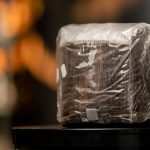Introduction
When you pick up a can of beans that lasts five years or a freeze-dried meal rated for twenty-five, it raises a question: how do these foods stay safe and edible for so long? The answer lies in a mix of science, packaging technology, and centuries of trial and error. Understanding why nonperishables last can help you make smarter choices for emergency kits, camping gear, or everyday pantry staples.
The Role of Microorganisms
Food spoils because bacteria, yeasts, and molds break it down. These microorganisms thrive when they have three things:
- Moisture
- Oxygen
- Favorable temperatures
Nonperishable foods are engineered to remove or limit these factors. Without the right environment, microbes can’t multiply and the food stays stable.
Moisture Control
Water is the biggest enemy of shelf life. Drying, freeze-drying, and dehydration all work by reducing the water content to levels too low for bacteria to survive. For example:
- Dried beans contain less than 10% moisture.
- Freeze-dried meals may hold as little as 2–4% moisture.
Moisture-proof packaging, like vacuum-sealed mylar bags, ensures that water doesn’t seep back in.
Oxygen Limitation
Oxygen fuels both microbial growth and chemical reactions like rancidity. By removing or minimizing oxygen, food companies extend freshness dramatically. Common methods include:
- Vacuum sealing: Removes most air before sealing.
- Nitrogen flushing: Replaces oxygen with inert nitrogen gas.
- Oxygen absorbers: Small packets that chemically trap leftover oxygen inside packaging.
This is why canned goods and sealed pouches can last years without spoiling.
Temperature and Environment
Cool, stable temperatures help nonperishables stay fresh. Heat speeds up chemical breakdown, which is why storage recommendations always suggest dark, cool places like basements or pantries.
Even if a food is preserved perfectly, leaving it in a hot car or attic can cut its shelf life in half.
Packaging Innovations
Packaging is just as important as the food itself. Advances over the last century have been game-changing:
- Tin cans (19th century): Airtight and durable, ideal for soups, beans, and vegetables.
- Foil pouches (20th century): Lightweight, flexible, and heat-sealable.
- Mylar and multi-layer plastics (modern): Block oxygen, light, and moisture simultaneously.
Good packaging doesn’t just keep food safe, it makes it portable and disaster-ready.
Preservatives and Natural Chemistry
While many nonperishables rely purely on physical methods (like drying), others use natural preservatives to stay safe. Examples include:
- Salt: Draws moisture out through osmosis.
- Sugar: Creates an environment where microbes can’t survive.
- Acids: Pickling with vinegar lowers pH, preventing bacterial growth.
Modern products often reduce additives, instead depending on packaging and sterilization for shelf life.
Examples of Shelf Life by Category
- Canned goods: 2–5 years, sometimes longer if stored well
- Dry staples (rice, pasta, oats): 10+ years if kept airtight
- Freeze-dried meals: 20–30 years in sealed mylar
- MREs (Meals Ready to Eat): 3–8 years, depending on storage temperature
Why It Matters
Understanding the science behind nonperishable foods helps you:
- Build a smarter emergency pantry
- Rotate stock before expiration
- Store food properly to maximize shelf life
- Choose the right mix of canned, dried, and freeze-dried items for your needs
Nonperishable foods last because they deny bacteria and spoilage the conditions they need to grow. By controlling moisture, oxygen, and temperature, and by using smart packaging, we’ve learned how to stretch the natural limits of food storage. What started with salting fish by the fire has evolved into meals that can feed astronauts in space.
When you see a 25-year shelf life on a package, it isn’t magic, it’s science at work, keeping your food safe until the day you need it.
Water Activity (aw): The Hidden Lever Behind Long Shelf Life
Most spoilage control comes down to water activity (aw), not just total moisture. Water activity measures how much unbound water is available for microbes and reactions. It is scaled from 0.00 (bone dry) to 1.00 (pure water). Foods with the same moisture percentage can behave very differently if one ties up water with solutes (salt, sugar) or structure (starch, proteins, gels). Lowering aw reduces microbial growth, enzyme activity, and many chemical reactions that degrade flavor, color, and texture.
Key thresholds to know
- aw ≤ 0.60: No growth of known foodborne pathogens. Oxidation can still occur if oxygen and heat are present.
- aw 0.60–0.70: Only a few specialized molds and osmophilic yeasts survive.
- aw 0.70–0.85: Many spoilage yeasts and molds can grow; most pathogens still inhibited.
- aw ≥ 0.85: Pathogens become a concern without refrigeration or other hurdles (e.g., low pH, heat treatment).
Examples by category
- Crackers, dry pasta, instant oats: ~0.10–0.40
- Jerky, dried fruit: ~0.55–0.75 (salt/sugar keep aw down)
- Peanut butter, nut butters: ~0.30–0.50
- Canned vegetables and soups: ~0.98–0.99, but shelf-stable due to thermal sterilization plus hermetic seal
How producers lower aw
- Dehydration and freeze-drying
- Hot air drying removes bulk water and is efficient for grains, legumes, and fruit.
- Freeze-drying freezes the food, then removes ice by sublimation under vacuum. Result: extremely low aw, fast rehydration, and strong nutrient and texture retention.
- Formulation with solutes
- Salt and sugar bind water via osmotic and colligative effects. This is why jam (high sugar) and cured meats (salt) resist spoilage at room temperature when packaged properly.
- Humectants such as glycerol can adjust aw without making a product taste overly salty or sweet in some formulations.
- Structural binding
- Starches, proteins, and hydrocolloids trap water in matrices that reduce its availability. This is common in baked goods and snack bars.
Packaging’s role in keeping aw low
Lowering aw is only half the job. You must keep it low. That means preventing moisture ingress over time.
- Moisture vapor transmission rate (MVTR) is the packaging metric to watch. Multi-layer films (e.g., PET/Al foil/PE laminates) and mylar bags offer low MVTR.
- Heat seals and zip closures limit leaks. Double sealing critical long-term items provides a secondary barrier.
- Desiccant packs mop up residual and ingress moisture for ultra-dry goods such as electronics-like ration heaters or spice kits placed inside larger kits.
aw, oxygen, and temperature work together
Water activity does not act alone. Spoilage is a systems problem.
- Oxygen: Even when aw is low, fats can oxidize. Use oxygen absorbers and low-oxygen headspace to reduce rancidity in nuts, whole-grain flours, and dehydrated dairy.
- Temperature: Most reaction rates follow a Q10 rule. As a rough guide, for many deteriorative reactions the rate doubles for each 10°C rise. A cool pantry can therefore multiply shelf life compared with a hot garage.
- Light: UV and visible light catalyze oxidation and vitamin loss. Opaque or foil-lined packages mitigate this.
Practical targets and checks for home storage
- Dry staples (rice, beans, oats, pasta): Package in mylar with appropriate O₂ absorbers, store in sealed bins. Aim to keep aw effectively low by preventing moisture ingress.
- Jerky and dried fruit: If making at home, dry to a brittle or leather-like texture, then package with desiccant in an oxygen-limited pouch.
- Powdered milk and dry mixes: Particularly sensitive to moisture and oxygen. Use small unit packs to minimize repeated opening.
- Open-package discipline: Once a bag is opened, aw can climb quickly in humid kitchens. Reseal promptly, purge headspace if possible, and consider smaller pack sizes to reduce exposure.
Troubleshooting common shelf-life failures
- Stale crackers or soft granola: Moisture ingress raised aw. Fix with tighter containers, lower MVTR pouches, or adding a desiccant.
- Rancid nuts: Oxidation rather than aw. Add oxygen absorbers, choose opaque packaging, and store cool.
- Mold on dried fruit: Final aw was too high or storage absorbed moisture. Dry further, add desiccant, and avoid warm storage.
- Caked powders: Moisture migration; use low-MVTR films and include desiccant. Break bulk into smaller packs.
Takeaway for planners and preppers
If you remember only one metric, make it water activity. Keep aw low with drying and formulation, lock it in with moisture-barrier packaging, limit oxygen, and store cool and dark. This four-point plan explains why certain foods last decades while others fail in months, and it is the most reliable framework for building nonperishable reserves that actually deliver when you need them.
Thermal Processing and Sterilization: Heat as a Guardian of Shelf Life
When water activity and oxygen control are not enough, the food industry turns to thermal processing. Heat has been used for centuries to extend shelf life from ancient boiling and smoking to modern retort canning. The principle is simple: raise the food’s temperature high enough, for long enough, to destroy harmful microorganisms and deactivate enzymes that drive spoilage. But the methods and technologies behind it are more sophisticated than many realize.
The Basics of Microbial Kill
Heat treatment aims to reach two key safety goals:
- Pathogen destruction – killing dangerous microbes such as Clostridium botulinum, Salmonella, and Listeria.
- Spoilage organism control – reducing yeasts, molds, and lactic acid bacteria that may not cause illness but ruin food.
Scientists measure this with values like:
- D-value: the time needed at a given temperature to kill 90% of a specific organism.
- Z-value: how much the temperature must change to alter the D-value tenfold.
By calculating these, processors design treatments that deliver commercial sterility, a state where dangerous microbes cannot regrow under normal storage.
Major Thermal Methods in Nonperishables
1. Canning (Retort Processing)
- Invented in the early 19th century, perfected by the mid-1800s.
- Foods are sealed in cans or glass jars and heated in pressurized steam chambers at 116–121°C (240–250°F).
- The combination of time, temperature, and airtight sealing allows shelf life of 2–5 years, sometimes longer.
2. Pasteurization
- Named after Louis Pasteur.
- Uses milder heat (typically 60–85°C) for shorter times to kill most pathogens but not achieve full sterility.
- Common for shelf-stable juices, milk (when ultra-pasteurized and aseptically packaged), and some soups.
3. Ultra-High Temperature (UHT) Processing
- Exposes liquid foods to 135–150°C for a few seconds.
- Combined with aseptic packaging, it allows milk, creamers, and some broths to sit unopened on shelves for months.
4. Aseptic Processing
- Sterilizes both food and packaging separately before combining them in sterile conditions.
- Extends shelf life without the heavier metal or glass packaging typical of traditional canning.
Heat and Quality Balance
Heat is powerful, but it has trade-offs. Excess thermal processing can cause:
- Nutrient degradation (especially vitamin C and B vitamins).
- Texture softening in vegetables and meats.
- Flavor changes, sometimes described as “cooked” or “metallic” in canned products.
Food technologists carefully design time–temperature combinations to balance safety and shelf stability with minimal sensory loss. Retort pouches, for example, require shorter heating times than cans because the food layer is thinner, leading to better flavor retention.
Packaging’s Role in Heat Processing
Thermal processing works only if packaging holds the seal afterward. Key advances include:
- Double-seamed cans: interlocked metal seals that prevent oxygen or microbes from entering.
- Glass jars with vacuum seals: classic for home canning, where a “pop” indicates successful sealing.
- Retort pouches: multi-layer laminates of plastic and aluminum foil that withstand high heat while remaining lightweight and flexible.
Each of these ensures sterility is preserved once the heat treatment ends.
Why It Matters for Preppers and Consumers
- Reliability: Thermal-processed foods can last for years without refrigeration, making them foundational in every prepper pantry.
- Versatility: Canned meats, soups, vegetables, and broths are affordable, widely available, and nutritionally diverse.
- Predictability: Unlike dried goods that depend heavily on storage conditions, properly canned foods have highly reliable shelf lives.
- Safety: With correct processing, the risk of botulism and other dangerous illnesses is virtually eliminated.
Practical Takeaways for Home Storage
- Rotate stock: Even thermally processed foods eventually degrade in quality. Practice FIFO (first in, first out).
- Inspect cans: Discard bulging, rusted, or leaking containers are signs of compromised seals or microbial activity.
- Home canning caution: Follow USDA or tested recipes; under-processing creates risk of botulism. Pressure canners are mandatory for low-acid foods (meat, beans, corn).
- Temperature control: While cans resist spoilage, storing them at cool, stable temperatures prolongs nutrient and flavor quality.
Broader Perspective
Thermal processing is a perfect example of how food science layers defenses: water activity reduction, oxygen limitation, and then sterilization by heat. Together, these hurdles create products that can sit on shelves for years and still open as safe, ready-to-eat meals. From Napoleon’s military campaigns to modern prepper basements, the principle remains unchanged: heat is one of the most dependable guardians of shelf life.






